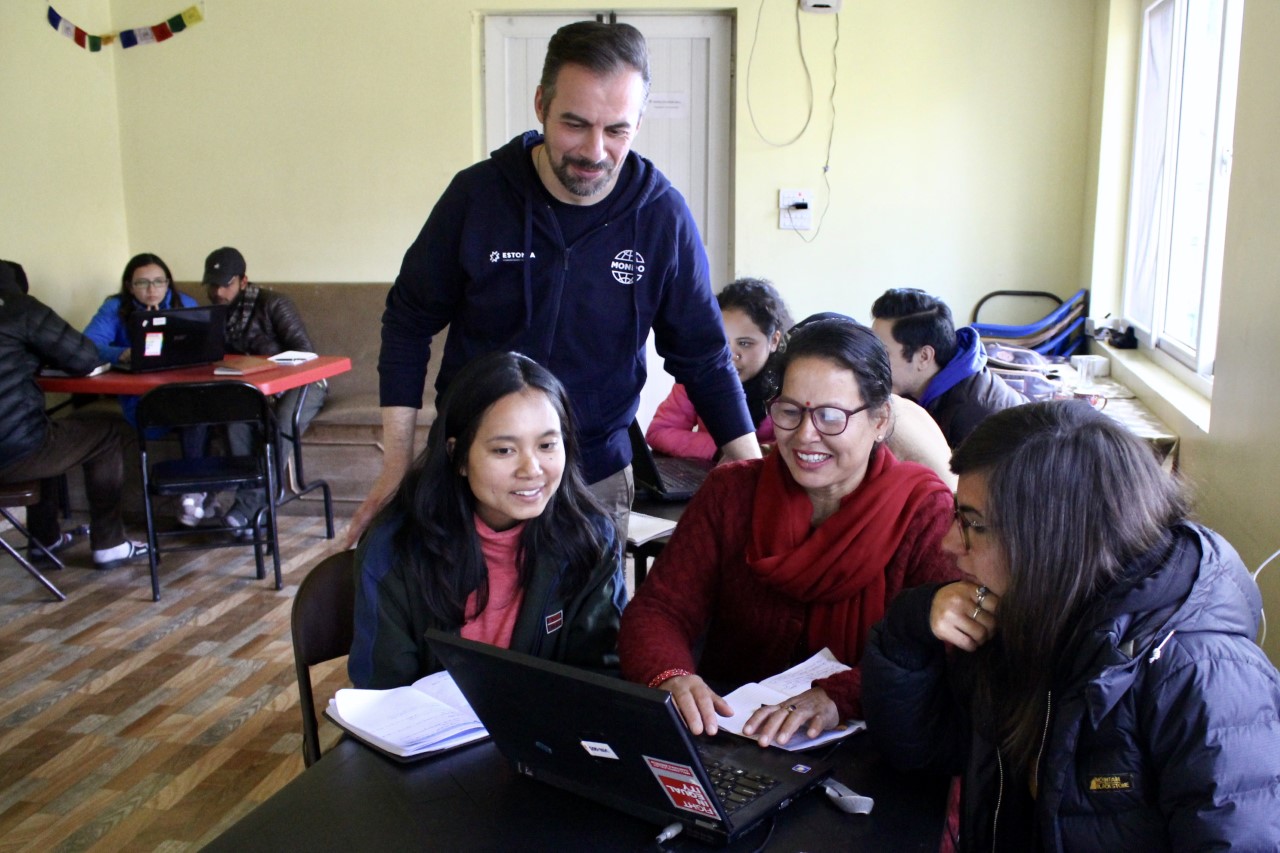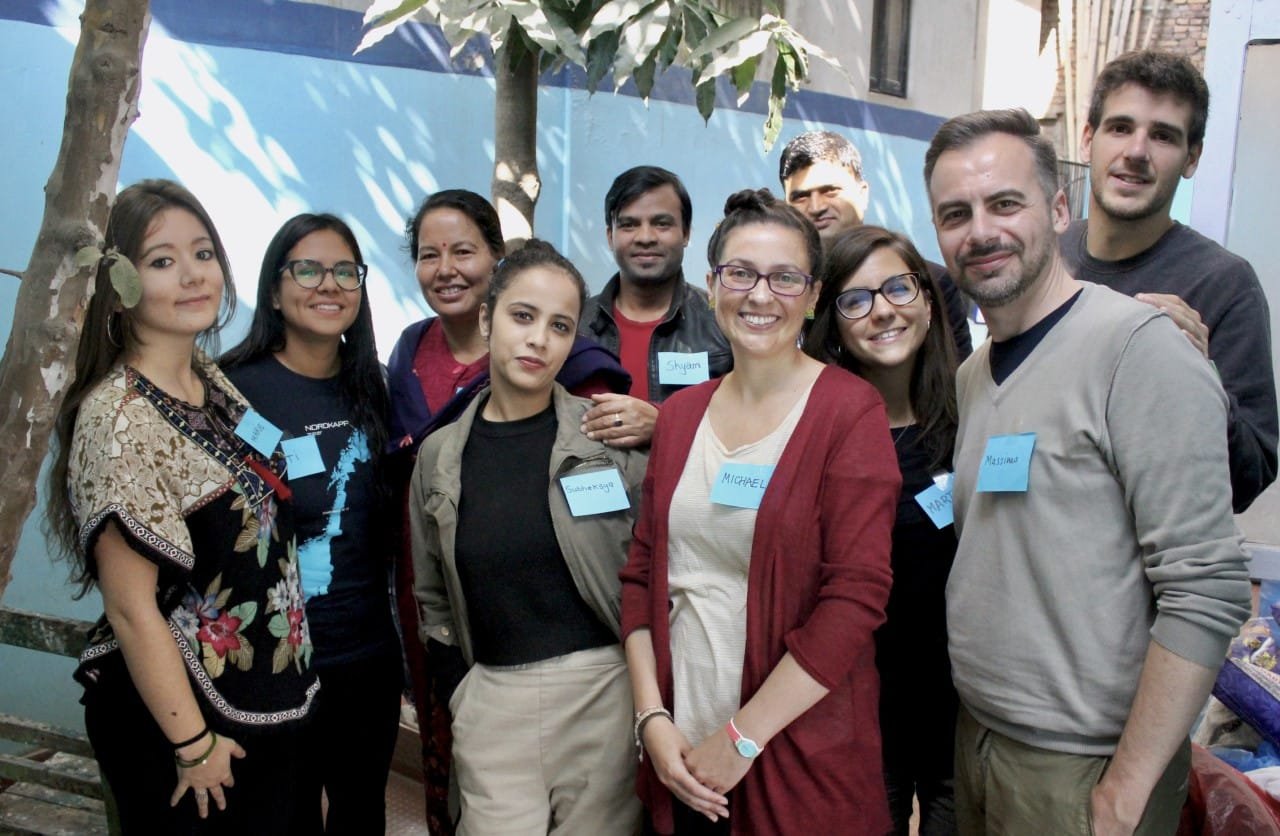By Massimo Modesti, Senior EU Aid Volunteer
An annual report is the identity card of an organization. It is a key tool to introduce an organization to donors, institutions, partners, and other stakeholders as well as to present the latest programs’ results. When I started facilitating report writing in Volunteers Initiative Nepal, I had that belief in my mind. I joined them at the beginning of September 2019 and, as a first assignment, I was asked to revise and compose the annual report for 2018. V.I.N. had annual reports up to that year but didn’t have the time to create one for 2018.
Unfortunately, going through the drafts provided me by the project staff, I realized that the type of report V.I.N. used so far was not able to highlight the organization’s achievements. Then, I decided to put all my efforts into training and guiding the staff in delivering a new type of report. I was definitely excited about this prospect and to see to what extent I could carry out a quality document. Coordinating the annual report was not an easy job, but despite the difficulties (or maybe because of them), I have enjoyed this activity very much. I devoted myself to this task for three months and coordinated around 15 people.

With the help of Michaela Rossmann – European Union Aid Volunteers in the position of Volunteer Manager and flatmate – I facilitated a workshop about report designing, writing and use of data. I asked the participants to divide into teams and to work on their respective project reports online. The training was successful and participants gave positive feedback on our guidance and teamwork strategies. Nevertheless, I was worried about the progress of the work since the teams were busy with other tasks in the field. To deliver a quality report we needed a regular and scheduled practice.
What a difference follow-up and a tutoring system make
The report was a turning point in my deployment in Nepal. After four months, I was finally able to collaborate with my main interlocutors: the project staff. In the beginning, they were reluctant to write. They were used to delegating report writing to V.I.N. volunteers and to paste their texts into the final report. We all know that writing is not an easy task at all and needs a lot of practice. I started inquiring about their writing skills and their ideas about reporting in order to implement a support strategy. Together with the support for project staff given by the EU Aid Volunteers Michaela Rossmann, Martina Todisco and Marie Cadeaux, and the Nepalese volunteer Pratiksha Rai, we progressed in writing style and data analysis. I could have not reached this goal without them.
Another important action gave a big push to the annual report. During that time, the managers were busy with the staff performance appraisal, and I was asked to join them in improving their techniques. Michaela proposed the 360-Degree Performance Appraisal and I immediately supported this idea and it was approved by management. Thanks to the application of this particular appraisal method, management and staff were able to see more clearly the potentials and limitations, including difficulties in delivering reliable data and organizing texts. Quality report writing became a staff development goal and the overall process a learning experience for all staff and volunteers involved.
While the teams were busy with integrating and amending the texts according to my feedback, I was focusing on the missing parts. Inspired by reports published by other international NGOs, I decided to create new sections highlighting the enormous type of work made by V.I.N. The last month was mainly dedicated to graphic design and other small amendments. I worked with Mibis Shrestha, the organization’s Webmaster, for the second time and I really found him talented and creative. I definitely enjoyed working with him. For the purpose of designing the report, he also learnt how to use new software able to perform quality graphics. In the last two weeks, after I was repatriated, we worked together remotely and, despite the time difference, we have been able to collaborate effectively until the end.
 What I have learnt from this experience so far
What I have learnt from this experience so far
After about three months of work, V.I.N. has published the 2019 annual report: completely revised in terms of concept, structure, format, and graphic design. There is still room for improvement for future reports. I hope that in the future, with the help of other EU Aid Volunteers, Volunteers Initiative Nepal will be able to publish a comprehensive report with all the information described above. I also hope that this has been a useful learning experience for all the staff members and the volunteers involved and that they will keep as a lesson for the future.
To summarize, I would like to give some top tips for a good report, based on my experience and research. First, make language clear and simple. Second, avoid self-celebration and highlight the room for improvement and further developments. Third, use a few quality pictures able to express your approach and your results. Fourth, give only evidence-based information coming from reliable data and, if possible, double-check them. Fifth, entrust someone as a coordinator and ask him/her to work closely with all the staff. If the NGO has access to a graphic designer, then even better.
You can download the Annual report 2019 here: Download Now




 Member of
Member of